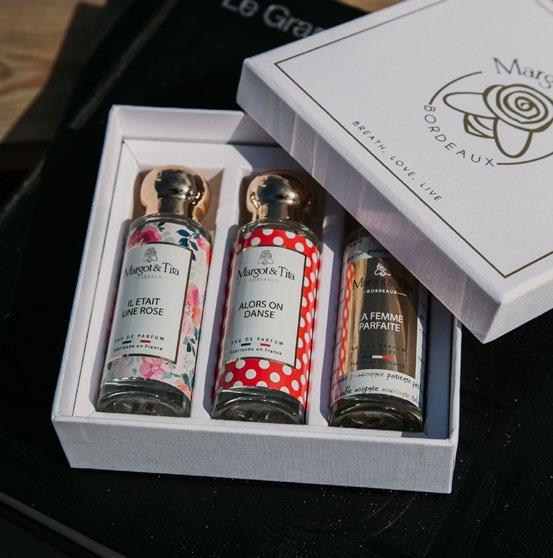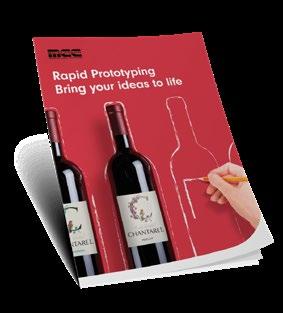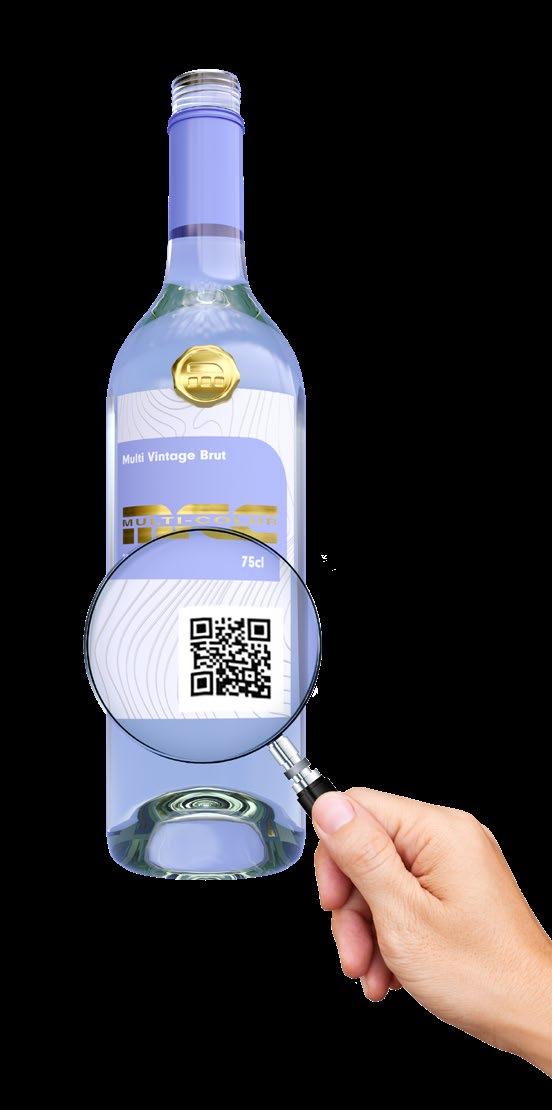
7 minute read
Versatile Solutions for
Versatile Solutions for Today’s Brand Owner
Jörg Waldorf and Darren Priebe are industry veterans, with almost 70 years combined experience in the packaging industry. They have worked with some of the world’s biggest brands. We speak with them to discover their outlook on the recent surge in digital printing and if that trend is here to stay.
We’ve seen a growth in digital packaging over the last couple of years. Do you think this is set to continue?
DP: Yes absolutely, not only for big brands but for small brands as well. We see graphics changing more and more frequently and the need to grab the consumer’s attention. Digital is a great medium to provide customization, personalization, speed to market and agility.
unlikely you would see a large global brand convert everything over to digital. It has its place but it is not a replacement.
Over this unprecedented year the global market has experienced significant changes. Has this contributed to the demand for digital processes?
DP: The last year was all about survival. There were JW: I agree. Digital print will take some brands, especially hand sanitization or home care a more dominant role in the future cleaning products, that really saw a surge and benefited. and it will continue to grow. It really Others saw a pull back with less demand – certainly in helps to drive emotions and support sectors such as beauty care. So what digital allowed diversification in the market. Another them to do was to quickly shift to capitalize on the smaller thing that drives growth in digital is print runs and respond to the lower demand they were efficiency, compared to one or two experiencing. Where we saw increased demand, there years ago, we can already get a far was a shortage where you couldn’t find products such as higher output on digital presses in a hand sanitizer on the market. It enabled companies to Jörg Waldorf short time. quickly shift and create a label very quickly to get their Executive Vice President of Global product on the shelf and help backfill that need. Sales – Food & Beverage at MCC Do you think digital will overtake analogue printing technologies? JW: It’s all about adapting to support new demands and DP: From my point of view the technologies are very quickly reacting to these needs and changing consumer complementary. That’s one of the great things about behaviour. MCC, we have all the different print technologies covered. If you look back, 15-20 years ago, rotogravure For larger brands with complex supply chains, do you was intended for large, higher run brands and digital see digital print playing a more prominent role? was more focussed towards lower run, smaller brands. DP: Yes absolutely, for a couple of different reasons. Now, the equipment manufacturers realize that they Brands are going to be doing refreshes more frequently need to work towards the middle. Rotogravure has than they ever have. It used to be every 18-24 months, developed to become more cost competitive on shorter now we’re seeing as often as every 6 months to respond print runs, as digital has on larger runs. to consumer demand and generate interest. Where I I refer to it as right size printing, there is not one think digital plays a very prominent role is: print technology that fits every SKU across a brand. 1. Phase in and phase out. Some brand owners can Typically, you will find that certain SKU’s within a brand write off millions of dollars in label scrap when they may fit with rotogravure, flexo or litho whereas others have a hard conversion from an old design to a would fit well with digital. This drives out cost, helps refreshed design. By taking advantage of digital it with agility and gives the brand owners assurance can be a transition footprint platform. We can print that they don’t have to make something fit because analogue then, as they prepare for the refresh, it is the only option they have. I think it is highly start to run small quantities of the existing design
in digital. This allows them to work down inventory, resulting in very little scrap when they convert to the new graphics. 2. Consistency around the globe. If we are going to be doing brand refreshes more frequently and if you’re a global brand owner you want to know that you can do that refresh in North America, Latin
America, EMEA or Asia Pacific all at the same time.
The beautiful thing about the digital platform is that it enables you to do that. We have digital printing facilities around the globe so we could, on a given date, print identical labels in all regions and I think that is a huge advantage when it comes to speed to market.
JW: In the beverage space we see, in particular, the soft drinks category taking advantage of the promotional benefits that digital can offer. Also, when we look to the beer business and craft breweries they are positioned in a different way. They want to step away from traditional decoration and move towards a more flexible solution such as digital. It is one of the key technologies with the right flexibility to make a product launch successful.
Personalized packaging is still a key market trend. How have your customers taken advantage of digital printing here?
JW: One of the first and most prominent examples was Share a Coke. This displayed how customization can be successful and engaging for consumers. They start talking about products and bring them up to second level platforms like the internet where they start to promote the brand; it is a free advertising platform.
Personalization isn’t just limited to names changing. We see mosaic where you can play with colors and patterns or collage where you can move items around the bottle and get dynamics on a container that you have never seen before. We have achieved a new level with these technologies and it is not finished yet!
DP: Jörg is exactly right. People want a unique experience. For traditional brick and mortar stores. We’ve seen individualization is really taking advantage of collage and mosaic. No two images are alike. When you’re looking at a product on the shelf, you can personally pick up the one that speaks to you and that’s very powerful. For sales transitioning to ecommerce, we’re beginning to have brands that are asking the question, how can I create my package so that when the consumer orders my brand they can personalize it? Personalization is going to play a much bigger role going forward.
JW: It is about how to empower brands by really personalizing them and making the consumer play an active role. Build your brand in a way that you can influence the influencers!
DP: In the past, in the fabric and home care arena, we’ve done some great digital programs. In the US, people are very loyal to their NFL football team. We were able to quickly make sure that we had packaging on shelf that represented the local team. Digital was perfect for that because we could support all NFL teams in the different regions, run smaller quantities and react if one team was selling better than another. There was also a fabric softener where they wanted every other bottle on shelf to be different. Digital allowed us to be able to print a nice mix of baby boys and baby girls.
Jörg Waldorf, Executive Vice President of Global Sales – Food & Beverage at MCC
Sustainability is a huge topic within the packaging sector – how can digital contribute?
JW: Darren already mentioned that with digital printing, you can be closer to demands and can therefore reduce wastage and run the entire product with less stock. These are key drivers. When it comes to smaller runs and volumes colors are ok on the first click, so the overall material consumption is lower than what we see with other technologies.
DP: Jörg you hit on a very important topic there, when I look at sustainability in digital there a couple of things that spring to mind. First off, when you combine with our sustainable material offerings whether it be recycLABEL® or shrink sleeve options, digital complements that. Unlike conventional printing, with digital printing you are up on color very quickly so there is no make ready waste, therefore less raw material going into the landfill. In addition, because no printing plates are Darren Priebe required, you don’t have the Executive Vice President of Global material associated with the plate Sales – CPG at MCC manufacturing or the energy consumption, greenhouse gases etc. Digital is very conducive to supporting sustainability. JW: Digital also supports sustainability initiatives in the market. For example, unique invisible codes can direct consumers to sustainability campaigns or can provide information about how to recycle the packaging.





